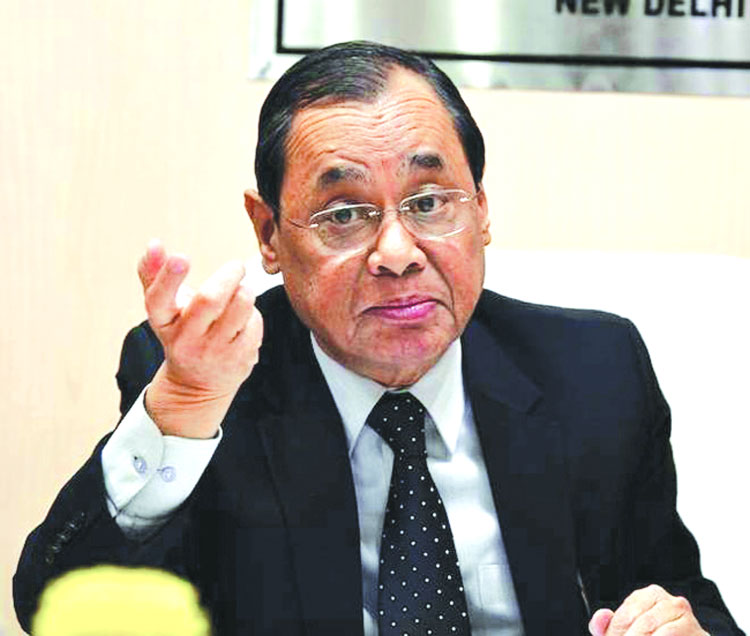CJI’s appeal to increase the retirement age of judges is not new but the move should also factor in lower court vacancies
The issue of increasing the tenure of judges has been hanging fire since the UPA regime and given the pendency of cases, the need to ensure continuity of hearings and proper assessment in crucial matters, there has been much argument in its favour. In that sense, Chief Justice of India Ranjan Gogoi’s letters to the Prime Minister asking for increasing the retirement ages of the judges of the Supreme Court and High Court by three more years aren’t new and merely add traction to a process that is expected to streamline our judicial process. He has even sought the revival of a practice that would allow retired top court judges to be assigned pending cases, which is permissible under the Constitution. Gogoi has essentially argued for using the full range of a judge’s experience and maturity, saying an increased timeline would allow him/her to give an educated and informed judgment in cases. Most judges, he feels, are close to retirement when they have evolved to their best. Most importantly, such a move, if legislated, would be in line with judicial norms worldwide.
Of course, the pendency of cases, 48 lakh to be precise in the higher courts, indeed needs redressal. With judges retiring and a lengthy process involved in filling up a vacancy, the process for which is initiated during the last lap of the retiree, there is an ever-widening vacuum. Besides, if retired judges can be asked to preside over tribunals, there should be no reason why their services cannot be, therefore, availed for a little longer in their official capacity. However, if a review does indeed take off, equal attention needs to be given to the lower courts, where pendency and vacancies pose an unprecedented crisis of backlogs. If Law Ministry figures are anything to go by, then the judge-population ratio in India is among the lowest in the world at about 20 judges per 10 lakh people, compared to double that number in the West. Earlier CJIs had also driven home the point that although the Law Commission had recommended increase in the number of judges from 10 judges per 10 lakh people to 50 in 1987, nothing had moved since then. Yet the sanctioned strength of High Court judges has increased from 906 judges in June 2014 to 1,079 judges in December 2018 and those of district/subordinate courts from 20,214 in 2014 to 22,833 in 2018. Gogoi’s predecessor Dipak Misra, too, had expressed concern over the national backlog touching 3.3 crore cases, a major chunk of them clearly in the subordinate courts. Besides, with India’s projected population spiral over the next decade, the judge-population ratio will only go up. Therefore, the shortage of judges should be looked at holistically across hierarchies because pendency at all levels only lends credence to the theory that justice delayed is justice denied and entrenches our exasperation about a redressal system that does not guarantee closure. Of course, there are both advantages and disadvantages that will have to be thoroughly considered. Increasing the age of retirement for Supreme Court and High Court judges undoubtedly strengthens the available resource of expertise and helps in appointing new judges in a graded rather than a rushed manner and without affecting existing judges. Faster disposal also means relief for litigants, not to mention their costs. And of course, the sense of continuity will also keep the judiciary independent of political expediency and insulate it from imperatives of the government of the day. The same logic can, of course, always be turned on its head to argue that while intended to free the judiciary from political pressure, the courts could, in fact, become more politicised. Sure of their longer tenure, judges, while believed to be bipartisan, could also be ideologically prone to select their own kind in the hierarchy, considering their extension was granted in a certain political environment. This concern has particularly arisen in the US Supreme Court, where lifetime appointments have sparked a debate on limited tenures. Besides, some argue that a longer working period for judges would also demotivate the talented aspirants looking to move higher and change the judiciary with their fresh take on things. Still, a retirement age of around 70 for judges is commonplace in Belgium, Denmark, Ireland, the Netherlands, Norway and Australia. No doubt a corrective has to be taken, but with the top court coming under the scanner all too often over the past year, there have to be adequate checks and balances.
Courtesy: The Pioneer








 OpinionExpress.In
OpinionExpress.In















Comments (0)